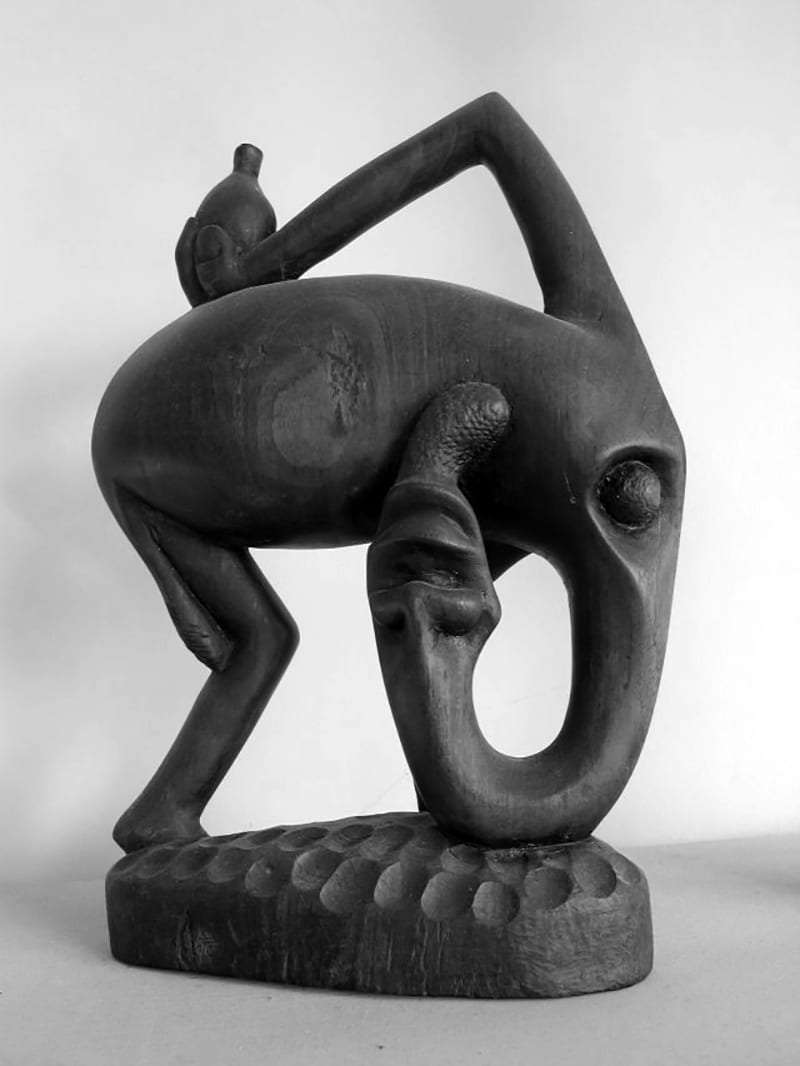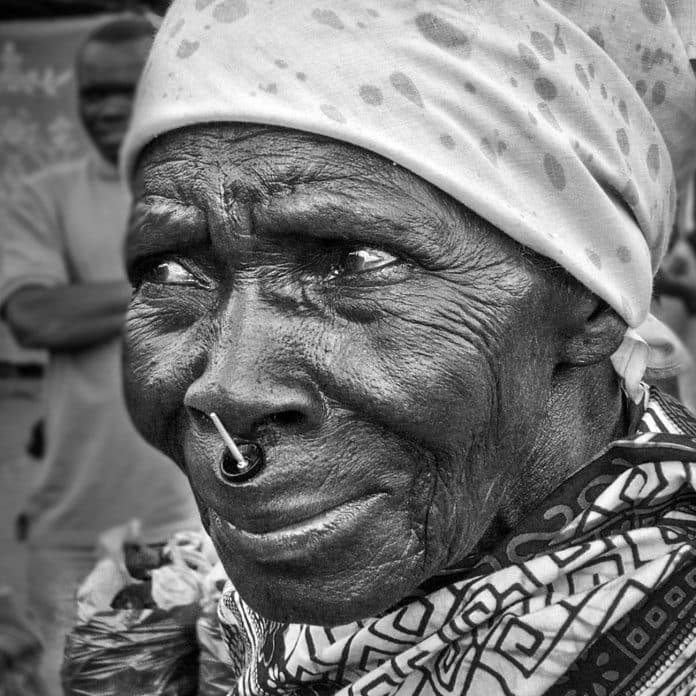Makonde People – History, Art, Notable People and More
The Makonde community is a tribe found in Kenya, northern Mozambique, and southeast Tanzania. The Makonde Tanzania people perfected their way of life on the Makonde Plateau in present-day Mozambique. Presently, they are found throughout Mozambique and Tanzania, with minimal representation in Kenya. The total number of Makonde people living in Tanzania in 2001 was calculated to be more than 1,100,00. The census held in Mozambique in 1997 put the total number of Makonde people living in Mozambique at 233,358 to bring the grand total to 1,373,358. River Ruvuma roughly divides the tribe; members living in Mozambique are called Maconde, while the ones in Tanzania are called Makonde. Over time, both groups have gone on to develop different languages. However, their shared culture and origin remain undisputed.
In Kenya, 300 Makonde people walked to Nairobi from Kwale. Human rights activists, as well as other supporters of human rights, accompanied the group on the walk. They went to the State House to prevail upon the President to ensure they were recognized as citizens of the country. President Uhuru Kenyatta welcomed them warmly. After treating them to a well-made meal on October 13, 2016, President Kenyatta instructed the ministry in charge to give ID cards to the Makonde people not later than December 2016
History
According to historical accounts, European, Arab, and African slaves found it hard to conquer the Makonde people. They didn’t fall under colonial rule till the 1920s. In the 1960s, the rebellion that drove out the Portuguese from Mozambique started in the homeland of the Makonde people in the Makonde Plateau. The rebel organization FRELIMO got some of its funds through selling Makonde carvings Tanzania; thus, the Makonde tribe became the radical movement’s backbone. The Makonde people domiciled in Mozambique are still a powerful group in the country’s politics because of their active role in resisting Portugal’s colonial rule.
They speak the Makonde language, also called ChiMakonde. The language belongs to the Bantu language family, and it is similar to Yao. However, several members of the Makonde ethnic group speak some other languages. For instance, those in Mozambique speak Portuguese, those in Tanzania speak English, while Makua and Kiswahili are spoken among members of the ethnic group in the two countries. Traditionally, the Makonde people are a matrilineal group where inheritances and children belong to the women, and men move to their wives’ villages. They practice an animistic type of ancestral worship, which is still in existence today. Nominally the Makonde people of Tanzania are Moslems, while those in Mozambique are Moslems and Catholics. Among the Makonde people, girls undergo a ritual when they come of age, and the most skillful dancer among them is called “Muidini.”
The Makonde people are most popular for the carvings they make with wood. The carvings are mainly made with blackwood (mpingo). They are also popular for their puberty rituals.
Makonde Tribe in Tanzania
The Makonde tribe Tanzania is an ethnic group primarily residing in southeastern Tanzania, particularly in the Mtwara and Lindi regions. They are known for their unique cultural heritage, including intricate woodcarvings, vibrant dances, and a strong sense of community. The Makonde people have a matrilineal social structure, tracing descent and inheritance through the female line, and place great importance on family lineage and connections. They primarily engage in subsistence agriculture, with crops such as maize, cassava, millet, and beans forming the basis of their diet. Makonde art, especially their renowned woodcarvings, has gained international recognition for its exceptional craftsmanship and artistic quality.
Makonde Dar es salaam – Makonde District
The term “Makonde District” does not refer to a specific district in Tanzania or Makonde Mozambique. The Makonde people primarily inhabit southeastern Tanzania and northern Mozambique, but there is no district solely designated as the “Makonde District.” The Makonde are spread across different regions and may reside in various districts within these countries.
Makonde Culture
Makonde culture is known for its exceptional woodcarvings, with intricate sculptures and masks depicting human figures, animals, and mythical creatures. They have a matrilineal social structure, tracing descent and inheritance through the female line, and place great importance on lineage and family connections. Music and dance play a significant role in their cultural expressions, with traditional instruments accompanying vibrant performances during community celebrations and ceremonies.
Makonde Food
Makonde cuisine typically consists of staple foods such as maize, cassava, millet, and beans, which form the foundation of their diet. These ingredients are often prepared into various dishes such as stews, porridges, and cassava-based dishes, providing nourishment and sustenance to the Makonde people.
Makonde Music
Makonde music is characterized by its rhythmic intensity and lively melodies. It often features a combination of traditional instruments like drums, xylophones, and flutes, creating a dynamic and engaging musical experience.
Makonde Dance
Makonde dance is vibrant and energetic, reflecting the spirit and joy of the community. It often involves rhythmic movements, intricate footwork, and expressive gestures, accompanied by the rhythmic beats of drums and other traditional instruments.
Makonde Tattoo
In the past, Makonde tattoos held significance as regional markers, with different tribes favoring particular motifs that followed established patterns. The facial and body adornments consisted of chevrons, angles, zigzag and straight lines, occasionally accompanied by circles, diamonds, dots, or depictions of animals. Currently, these patterns have mostly been preserved, but they are now typically found on individuals who are sixty years old or older, both men and women.
Makonde Art Tanzania
Traditionally, the Makonde people have sculpted wooden everyday objects, masks and figures to be used for rituals. Makonde art grew in relevance after the 1930s, becoming an essential component of contemporary African art. George Lilanga was the most internationally known artist of Makonde art.
Makonde Wood Carvings
Makonde wood carving is renowned for their intricate craftsmanship and artistic beauty. The carvings often depict human figures, animals, and mythical creatures, showcasing the creativity and skill of the Makonde artisans.

Shetani Makonde
“Shetani Makonde” refers to a specific type of woodcarving created by the Tanzania Makonde people. Shetani” translates to “devil” or “spirit” in Swahili, while “Makonde” refers to the ethnic group. Shetani Makonde sculptures are intricate and often depict mythical or supernatural figures, characterized by exaggerated features, intricate details, and a sense of dynamism. These sculptures are typically carved from a single piece of wood and are highly sought after for their artistic value and cultural significance.
Types of Makonde Sculpture
Makonde sculptures encompass a variety of forms and styles. Here are a few notable types of Makonde sculpture:
- Shetani/Sungu-sungu
- Mapiko Masks
- Ujamaa Sculptures
- Ancestor Figures
Check them out here:
- Makonde sculpture for sale
- Makonde sculpture value
- Makonde shetani sculpture
- black wood carvings of the Makonde
- Makonde art for sale
- Makonde carvings for sale
- Makonde carvings value
- Makonde ebony carvings
Makonde Chess Set
Makonde chess sets are unique and prized for their intricate craftsmanship. Carved from wood, these sets feature detailed pieces representing Makonde figures, animals, and mythical creatures, combining the strategic game of chess with the artistic expressions of Makonde culture.
Makonde Tree of Life
The Makonde Tree of Life is a symbolic representation of the interconnectedness of all living beings. Carved from a single piece of wood, it depicts a central trunk with branches, featuring intricate human and animal figures intertwined to represent the unity and harmony of the natural world. The Tree of Life is a significant cultural and artistic symbol for the Makonde people, reflecting their deep spiritual beliefs and reverence for the natural environment.
Makonde Family Tree
A Makonde family tree is a visual representation of the genealogical relationships within a Makonde family. It depicts the ancestral lineage, tracing the connections between different generations, typically through the female line in the matrilineal social structure of the Makonde. The family tree showcases the relationships between parents, children, siblings, and extended family members, reflecting the kinship ties and the importance of lineage in Makonde culture.
Prominent Makonde People
- George Lilanga – a Tanzanian artist
- Reinata Sadimba – a Mozambican artist
- Gen. Makame N Rasheed, ex-National Service Chief of Tanzania
- Harmonize – popular Tanzanian musician and creator of Kondegang
- Filipe Jacinto Nyusi – 4th President of the Republic of Mozambique
- Benjamin William Mkapa – 3rd President of the United Republic of Tanzania
Makonde Names
Makonde names often carry deep cultural and personal significance. They can reflect elements of nature, ancestral connections, or express desired qualities, with meanings that hold importance within the community. Additionally, Makonde names are sometimes gender-specific, reflecting the matrilineal structure, and may be given to honor particular family lineages or ancestors.
Learn more about the Makonde history and Makonde village with these resources:
For more articles related to Tanzania Tribes, click here!
































